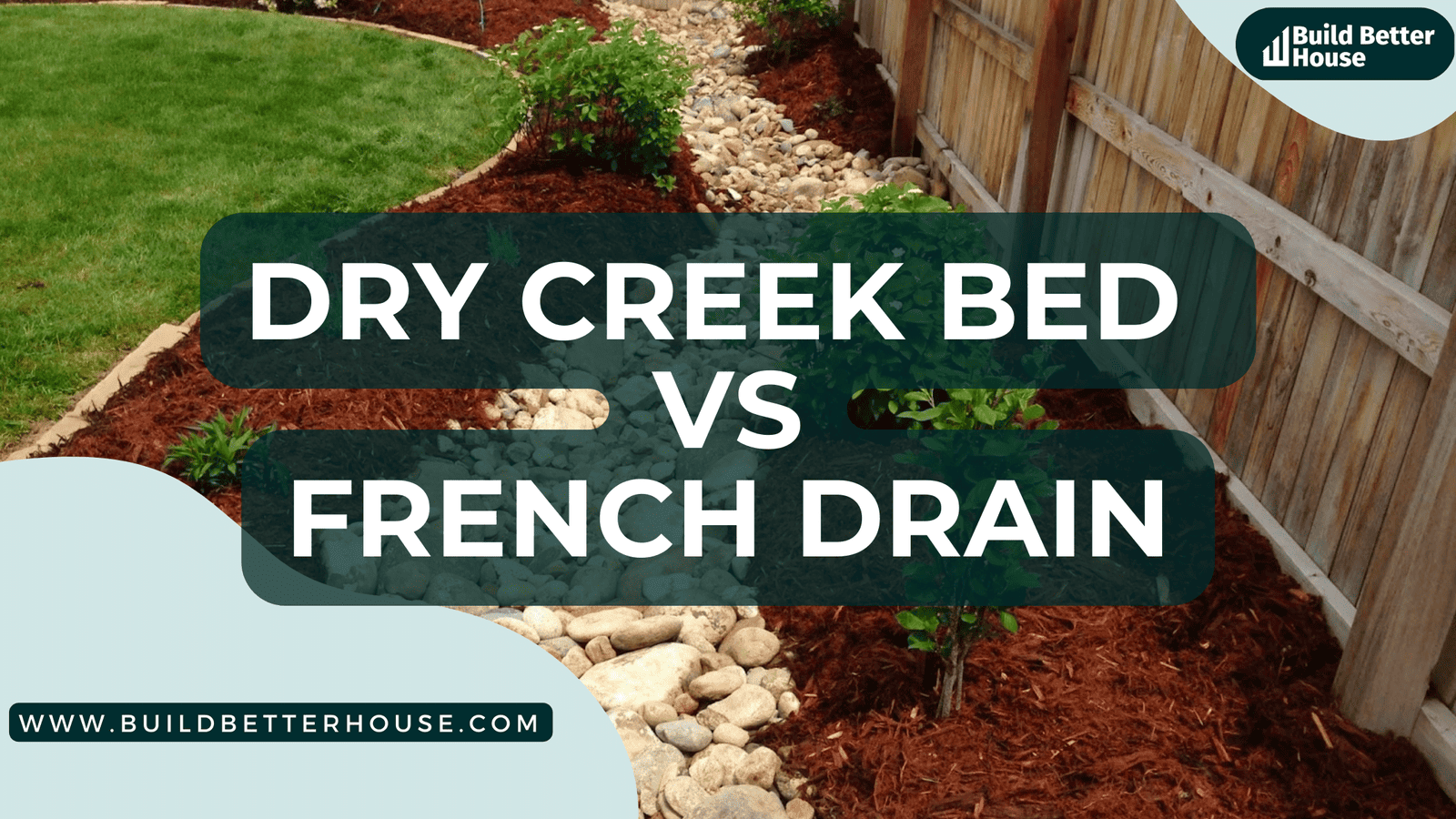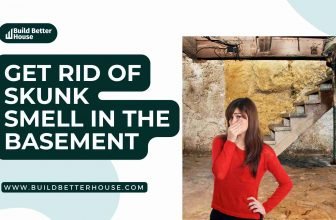Dry Creek Bed vs French Drain: Which One Is Best For Landscaping?

Are you confused by the disputes over dry creek bed vs french drain and looking for the best option for your requirements? Don’t look any further because both ways can assist with drainage and offer distinct advantages.
We’ve prepared this blog article with an in-depth examination of dry creek bed vs french drain to assist you in deciding which one to go with. Let’s dive in!
FAQs
1. Is it necessary to line a dry creek bed?
Yes, because lining the dry bed creek with rocks helps to avoid erosion by lowering the flow velocity and turbulence of the water.
2. How deep should a dry creek bed be?
The depth of a dry stream bed should be determined by the quantity of water projected to flow through it during peak rainfall and flooding. A dry creek bed should be deepest in the center and shallowest at the edges.
3. What is the best type of rock for a dry creek bed?
Angular gravel is the ideal form of rock for a dry creek bed. This gravel may be obtained in many sizes and hues and offers adequate drainage while filtering out contaminants. Also, jagged gravel is aesthetically pleasing and contributes to the stream bed’s organic appearance.
Basics of dry creek beds
A dry creek bed is a landscape feature that diverts water away from flood-prone areas in an aesthetically pleasant and natural-looking manner. It entails placing rocks, gravel, and other materials in a shallow channel in the land. The plan is to build a temporary “stream” to restrict water flow and keep it from collecting in low-lying regions.
Basics of french drain
Unlike dry creek beds, french drains use a perforated pipe surrounded by gravel or crushed stone. This allows water to quickly enter the system, filter through the gravel, and safely drain away from home.
Maintenance for these systems usually involves periodic inspections to ensure nothing clogs up the pipe and the occasional backflush to remove any sediment buildup.
Now that you know the basics of dry creek bed and french drain, let’s discuss their design.
Dry creek bed vs french drain: Design
Since both drainage systems, dry creek bed vs french drain, offer excellent solutions to managing surface water, a few differences exist. Knowing the distinctions between the two is essential for deciding which one is ideal for your project; thus here, we’ll cover the dispute between dry creek bed vs french drain design, which will provide a clear image of both:
Dry creek bed
A dry creek bed is designed to create a natural look and feel, often with rocks and other materials. It also provides a path for water to flow, usually downhill, with the help of slopes and curves.
Furthermore, the dry creek bed is designed to be visually pleasing while controlling water flow and managing drainage and used in landscaped areas and can add a touch of beauty to a project.
French drain
A french drain is a more traditional water management and drainage solution. This system consists of a trench filled with gravel and a pipe at the bottom. The pipe moves water away from the site, and the gravel helps filter out solids. French drains are often used when a dry creek bed is impractical, such as in a parking lot or flat surface.
While the discussion of dry creek bed vs french drain can be a bit complex since both are excellent options, hence, it is critical to analyze the amount of water that needs to be managed.
Dry creek bed vs french drain: Materials & Maintenance
It is an important topic to consider when it comes to materials & maintenance. Dry creek bed vs french drain are two popular solutions for managing water runoff. The choice between the two depends on your needs, the local climate, and available materials.
Dry creek beds
Dry creek beds are fairly easy to install and low maintenance since it’s made of natural stones and can be decorative in your landscape. They can be used to replace a section of lawn or used in hillside areas to manage erosion and are best suited for areas with low to moderate annual rainfall.
French drain
French drains are more labor-intensive to install and require more maintenance than a dry creek bed. However, they are better suited for areas with higher annual rainfall as they can handle more water than a dry creek bed.
Therefore, a decision can’t be drawn easily between the two- dry creek bed vs french drain so check the amount of annual rainfall in your area and the available resources.
Dry creek bed vs french drain: Pros
When comparing dry creek bed vs french drain, some distinct advantages must be considered:
| Pros of dry creek bed | Pros of french drain |
| A dry creek bed is an aesthetically pleasing, low-maintenance option for water drainage and runoff control. | A french drain is more efficient and effective for eliminating standing water from your property. |
| Dry creek beds are their low cost and ease of installation | French drains are much more effective at eliminating standing water from your property. They are installed by digging a trench and then filling it with gravel, which acts as a conduit for water to flow away. |
Dry creek bed vs french drain: Cost comparison
Dry creek bed vs french drain debates have been widely discussed, showing their superiority. However, many folks are still unsure which one to choose. To help you make a more informed decision, examine the costs, which vary depending on the size of the yard, the material utilised, and the complexity of installation.
Dry creek beds
Dry creek beds are usually the cheaper of the two options, with installation costs ranging from $300 to $1,000. This is because dry creek beds are made from natural stone, gravel, or wood, and installation is relatively straightforward.
French drains
French drains, on the other hand, can be much more expensive. The cost of a french drain can range from $1,000 to $4,000, depending on the yard size and complexity of installation. This is because french drains require more labor and materials, such as PVC or corrugated pipes and gravel.
So, it’s crucial to compare costs when selecting which drainage option is ideal for your yard when comparing dry creek bed vs. french drain.
Dry creek bed vs french drain: Landscape space requirements
Landscape space requirements can be a key factor in choosing between a dry creek bed vs french drain.
Dry creek beds
Dry creek beds require more space than french drains, as they need to have enough land around them to create the stream’s meandering shape. This can limit their use in smaller landscapes or those with limited space.
French drains
On the other hand, french drains are more compact and require less space for installation, making them ideal for tighter spaces such as narrow areas along walkways or driveways.
When deciding between the two, a thorough examination of each factor is necessary, such as evaluating the available landscape space for a dry creek bed vs french drain.
Similar tutorials
Dry Well vs Leach Field: Which One Is Better For Your Home?
Confused by the differences between dry well vs leach field? This guide walks you through both dry well vs leach field with pros, cons, & more so you can choose the best drainage system for your home.
Backflow Preventer vs Check Valve: Which One Is Better For You?
Trying to compare backflow preventer vs check valve? Read our complete guide here about backflow preventer vs check valve- types of devices, helping you pick the right one for your needs!
Dry Well Vs. French Drain: Which is the Best Solution?
Picking the right plumbing solution can be confusing—dry well vs french drain. But don’t you worry! We’ve brought this post so you can easily determine if dry well vs french drain is better suited to your property and budget.
Wrapping up
Despite many discussions on dry creek bed vs french drain showed that these two are fantastic options for a landscaping project. However, French drains are a better option for smaller spaces along pathways or roads since they are more compact and take up less installation room.
Therefore, after analyzing dry creek bed vs french drain, you should have a clear decision based on the available landscape area and the amount of effort required to create either type of drainage system.
If you found this post useful, please share it with your friends and leave your thoughts in the comments section.
Read more:
How Long Does A Sump Pump Battery Last? Here’s The Truth
Can I Unplug Sump Pump? 4 Easy Tips You Can Try
Plumbing Fixture Calculator: How To Measure Correctly?
Sump Pump Replacement Cost: How To Get The Best Price?






